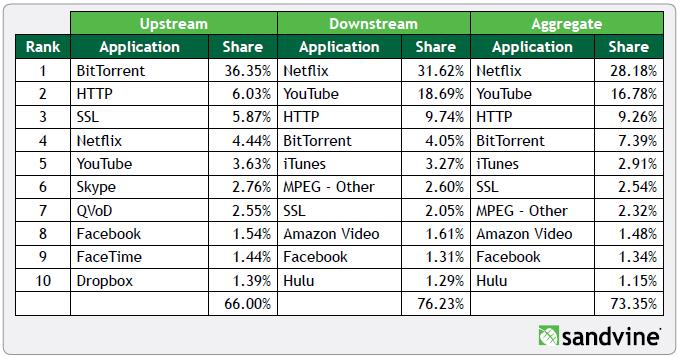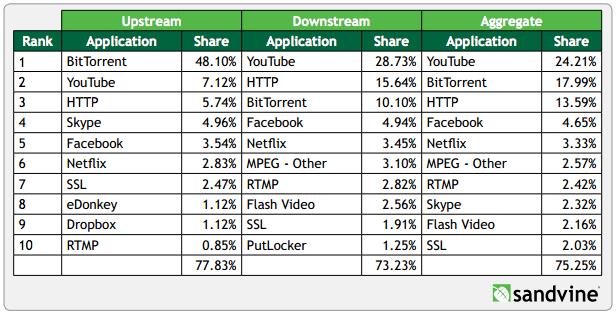Facebook, Dropbox, Skype, YouTube… What are Europeans dedicating their bandwidth to? Well, mainly to downloading files. Thus are the findings of a study from Sandvine in which BitTorrent occupies the first slot in terms of total traffic, with an index that’s much higher compared to the one recorded the quarter prior.
Fully 18% of European traffic is dedicated to BitTorrent, which at peak hours garners up to 48% of the total. This figure is on the increase compared to the first quarter, when it registered at 17.36%. We see the opposite happening in the United States, where the 20% BitTorrent chalked up in the first quarter has fallen to 7%—figures that reveal a lot about how people are accessing content in both places.
Upstream and downstream
The data obtained in the study, which puts BitTorrent at the top of the table of upstream traffic, places YouTube in second place and uploads to HTTP pages in third. These three positions are shuffled in the downstream table, where YouTube comes in first, followed by the HTTP pages and then BitTorrent.
The importance of the latter is growing increasingly more pronounced on this continent, whose predilection for P2P downloads appears to have no end in sight, given the lack of alternatives available on this side on the pond.
The following table shows the data from the United States, which displays important variations from the Europeans’ results.

Why, though?
There are many theories as to why we Europeans dedicate so much of our bandwidth to BitTorrent, why it’s still increasing, and why North Americans have been reducing their use. But it’s understood that the easy access to audiovisual content in the United States provided by companies themselves—and always legally—has provoked users to move to those platforms that let them view their favorite series without resorting to piracy.
This fact makes clear that the average user is looking to consume series and films without having to turn to the crime of illegal downloads, putting a new option on the table for examining and understanding the industry.
Europe needs competitive paid alternatives for viewing and downloading content, something along the lines of the U.S.’s Amazon Instant Video or Netflix. In countries like Spain there is practically no option that has won over users, since the few that exist usually have a very tiny catalog or prices that don’t appeal to very many. Which means that P2P download programs will likely continue to be the order of the day across Europe.








